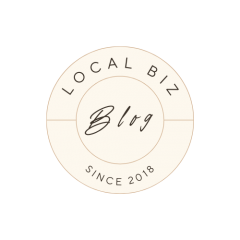
Navigating the complex landscape of financial assistance can be a daunting task for seniors. With approximately 80% of households with older adults facing financial challenges, understanding the available resources is essential. Many seniors are unaware of the benefits they may be eligible for, such as those offered by programs like Medicare and SNAP. This guide seeks to clarify how to assess your financial needs, identify suitable programs, and successfully navigate the application process to secure vital financial aid.
Understanding Your Financial Landscape
Before seeking financial assistance, it’s crucial to grasp your current financial situation. An accurate assessment of your monthly expenses and income is the foundation for understanding what benefits you may qualify for. Follow these steps to gain a clearer insight:
- Identify Monthly Income Sources: Include Social Security, pensions, investments, and any part-time work.
- Track Expenses: List essential expenses such as housing, healthcare, food, and transportation.
- Evaluate Living Arrangements: Determine if living alone or with family alters your financial needs.
Gathering this information helps pinpoint areas where financial aid may be necessary. After all, understanding the full scope of your finances is paramount in making informed decisions about assistance options.
Types of Financial Assistance Programs for Seniors
Seniors can access an array of government and community programs specifically designed to assist them. Here’s an overview of the most notable options:
1. Social Security Benefits
Social Security remains a bedrock component of financial sustenance for many retirees. To qualify, individuals must have accumulated at least 40 work credits, translating roughly to ten years of employment. The age at which full benefits can be accessed varies, but early retirement benefits can begin at age 62.
2. Supplemental Security Income (SSI)
Supplemental Security Income is a complimentary safety net for seniors who have limited means. SSI does not require work credits, making it accessible if income or resources are below set thresholds. This program helps cover basic needs like food and shelter.
3. Medicare and Medicaid
Medicare is crucial for healthcare coverage, but many low-income seniors should also explore Medicaid, which offers additional health services if eligibility requirements are met. States often have unique criteria for enrollment, so it’s wise to consult Medicaid resources specific to your location.
4. Supplemental Nutrition Assistance Program (SNAP)
SNAP, formerly known as food stamps, helps cover the cost of groceries, making it easier for seniors to maintain a healthy diet without straining their budgets. Each state has its own application process, so checking local guidelines is essential.
5. In-Home Supportive Services (IHSS)
Seniors struggling to perform daily activities may qualify for In-Home Supportive Services, which provides personal care assistance and household help, allowing individuals to remain in their own homes more safely.
6. Low-Income Home Energy Assistance Program (LIHEAP)
This program helps seniors with heating and cooling costs, aiding those experiencing financial difficulties due to energy expenses. LIHEAP can provide much-needed financial relief and comfort during extreme weather.
Applying for Financial Help: A Step-by-Step Guide
When applying for assistance, having your documentation in order can streamline the process. Here are some essential documents you’ll typically need:
- Identification: Such as Social Security cards or birth certificates.
- Proof of Income: Recent pay stubs, bank statements, or tax returns.
- Housing Info: Lease agreements or mortgage information.
- Medical Documentation: Necessary for healthcare-related programs.
How to Maximize Your Benefits
Combining benefits often leads to a more substantial safety net. For example, stacking Medicare with an Extra Help program can dramatically reduce prescription drug costs. Such layering effectively addresses multiple financial needs while helping seniors maintain their quality of life.
Community Resources
You can also tap into local resources for grants and support specific to your area. Many community organizations and non-profits focus on senior services, providing emergency support for food, utilities, and housing.
The following resources might be considered:
- The Salvation Army
- Local food banks
- Community action agencies
Reaching out to these organizations ensures a well-rounded approach to securing your financial stability.
Maintaining Your Benefits: An Ongoing Commitment
Securing financial assistance is not a one-time task. Staying organized and keeping track of renewal dates and reporting changes in your financial situation is vital to sustaining benefits. Programs like BenefitsCheckUp can help you manage and monitor your eligibility and updates.
Getting familiar with renewal periods can help prevent lapses in receiving essential aid. Additionally, professional resources like senior center programs or state health insurance assistance programs (SHIP) can provide support in managing your benefits effectively.
As you navigate this financial help landscape, remember that you’re not alone. A myriad of options is designed to support seniors seeking to secure a stable future. Whether through formal programs or local initiatives, a balanced approach can go a long way in alleviating financial stress.
If you need further assistance or guidance in exploring available options, feel free to contact Divine Leisure & Activity Center, a company committed to helping seniors find comprehensive support and navigate financial challenges.

